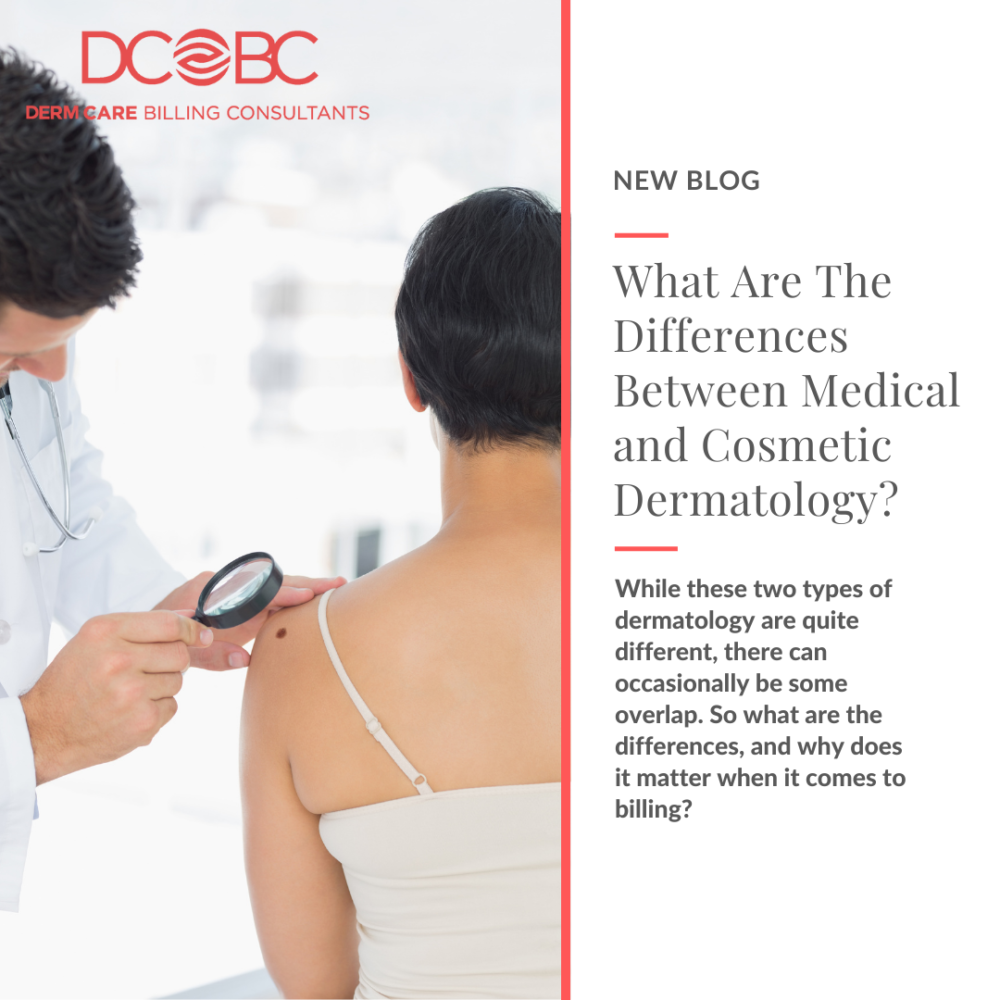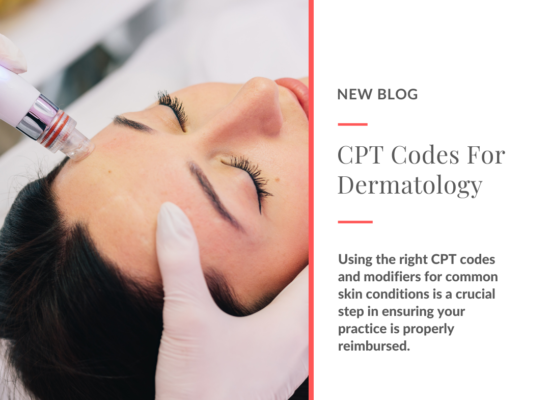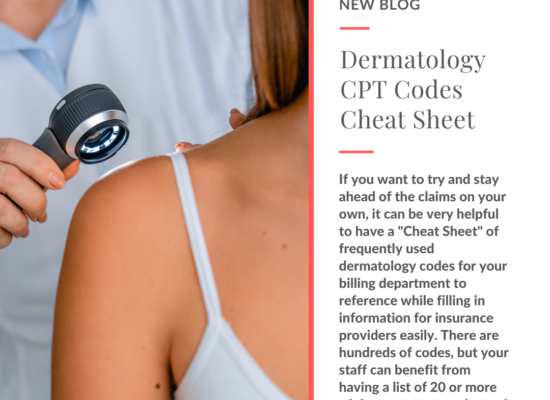There are two types of Dermatology, Medical and Cosmetic. This article will help explain the differences between the two, and how to properly set up your dermatology billing for each.
Because skin problems are highly visible – regardless of whether it’s on your face, your hands or your back – they can cause a lot of anxiety and stress, and patients want to get skin issues resolved as quickly as possible so they can put their best foot forward when presenting themselves to the world.
However, it can be challenging for patients to understand whether a skin treatment procedure is medically necessary or ‘just cosmetic’, and to make things more complicated sometimes it’s a little bit of both. Many skin conditions that are aesthetically displeasing may also require medical treatment, and therefore may be covered by insurance. But other skin conditions may just be to improve appearance, and therefore considered to be elective and out of pocket.
To help dermatologists and billing specialists understand the differences and the implications when it comes to billing codes, let’s look at what defines these two different but interconnected fields of skin care.
What is Medical Dermatology?
Medical dermatology refers to the treatment of skin disorders that, if not taken care of, will become a risk to a patient’s health and possibly even cause death. By definition medical dermatology therapies are time sensitive and necessary for protecting the patient’s health and life.
Here are some examples of common skin problems that fall under the realm of medical dermatology:
- Skin cancer
- Dermatitis
- Eczema
- Psoriasis
- Rosacea
- Shingles
- Acne
- Connective tissue disorders
Medical dermatology comprises both the diagnosis and treatment of these complex skin conditions. Treatments may include:
- Prescribing topical creams, gels, lotions or other medicines
- Phototherapy
- Scrapes, pulls and swabs
- Biopsies
- Systemic medications
- Radiation therapy
Because these treatments are required, insurance can be used to reimburse the costs.
What is Cosmetic Dermatology?
Cosmetic dermatologists deal with skin issues that are not caused by illness and do not have serious health consequences if left untreated, such as unwanted blemishes. Patients would like to undertake treatment to improve the outward appearance of the skin, and therefore they are largely elective procedures.
Some examples of Cosmetic Dermatology include:
- Skin tightening
- Dermabrasion
- Cosmetic laser treatment
- Hair removal or hair transplants
- Chemical peel
- Treatment of sun-damaged skin
- Botox injections
- Treatment of spider veins and rosacea
- Acne treatment
- Correcting scars and stretch marks
- Body contouring
- Cosmetic cryotherapy
Cosmetic dermatologists use a variety of treatments including photomedicine, drug therapy and surgical techniques. However, because they are not medically necessary to preserve a patient’s health and life, treatments will generally not be covered by insurance. However, there may be cases where the patient has a severe medical skin issue that would also require cosmetic treatment afterwards.
It’s important for clinics to ensure that patients understand the differences between medical and cosmetic treatments and that those seeking cosmetic enhancements will not be able to rely on insurance.
Often it is obvious whether a procedure is cosmetic or medically necessary. But there are also times when a skin condition not only looks bad, but also may require medical treatment for the health of the patient, and will therefore be covered by insurance. For example, a skin tag which is normally quite harmless can become a medical problem if it gets infected and will need to be removed to prevent the infection from spreading. Also, in the case of skin cancer, there are times where Mohs surgery may be appropriate treatment.
Dermatology clinics should therefore be familiar with which conditions often overlap between medical and cosmetic dermatology and be prepared to use the correct codes to avoid claims denials. If you find yourself needing help, the professionals at DCBC are here to give you a hand.





